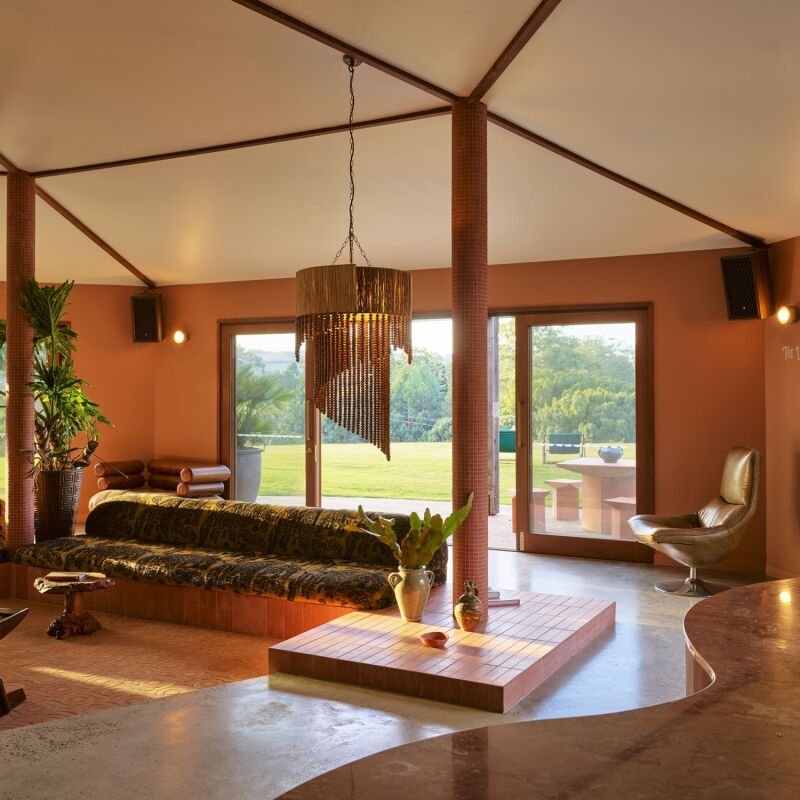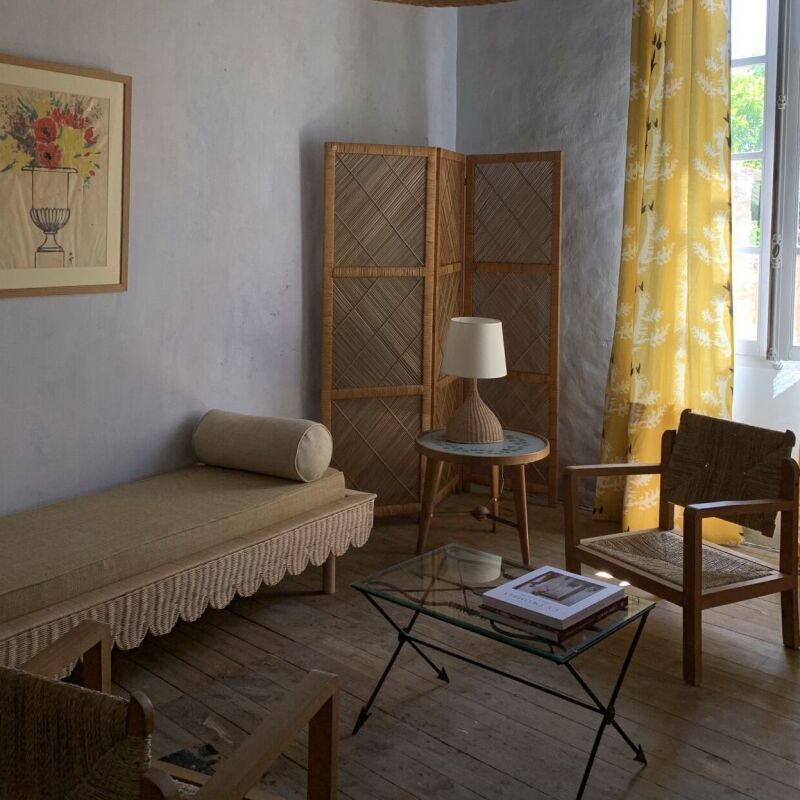My favorite places to visit when traveling are biographical museums, the original homes or workplaces of architects, artists, or writers. The spaces are personal, the experience is intimate, and I leave feeling as though the subject is a close friend. Perhaps the most intimate of them all is Kettle’s Yard in Cambridge, England. That’s because Kettle’s Yard is remarkably unchanged since owners Jim and Helen Ede left in 1973. “One of [England’s] most intimate and spellbinding museums, the collection of one man and his unerring eye; restorative, homely yet life-changing,” writes Mark Fisher in Britain’s Best Museums and Galleries. Before Kettle’s Yard was conceived, Jim Ede worked as a curator at the Tate Gallery during the 1920s and 30s, during which time he and Helen befriended artists such as Joan Miro, Ben Nicholson, Barbara Hepworth, and Pablo Picasso. The couple then lived in Tangier, Morocco, and the Loire Valley in France before moving to Cambridge. There, with the help of architect Rowland de Winton Aldridge and the University of Cambridge, Ede combined four dilapidated cottages into a single house.
The house, Ede wrote, would be “a continuing way of life from these last 50 years, in which stray objects, stones, glass, pictures, sculpture, in light and in space, have been used to make manifest the underlying stability.” It was to be open to the public, to Cambridge students especially, and house Ede’s extensive collection of art; most of which were gifts from the artists themselves. In 1966, Ede gave the house to the University of Cambridge and later retired to Edinburgh. Kettle’s Yard has been operating ever since, and earlier this year, after a period of renovation, the house reopened with an education wing, new galleries, and a café. I visited Kettle’s Yard for the first time this past June, and just as Fischer described, it was life-changing. Here are the 12 lessons I took away from the experience.
Photography by Alexa Hotz.
1. Be democratic.


Within the walls of Kettle’s Yard, Ede created a visual harmonic, where fine art and antiques meet organic materials and an eclectic assortment of objects, none of which exists on a hierarchy. A Barbara Hepworth sculpture is as important as the collection of shells its positioned near; a Picasso is accentuated by ordinary glassware; houseplants commingle with Windsor chairs and a Ben Nicholson painting. The democratic design of Kettle’s Yard is what makes it feel so inclusive—even among the kind of modern art collection that, housed elsewhere, might cause one to feel intimidated.
2. Let the artwork guide the palette.


As seen in the above two images, Ede let certain works of art inspire the surrounding interiors. At top, the Helen Frankenthaler painting communicates with the colorful china dishes housed in the hutch to the left, and while maybe it’s not intentional, the undone quality of the linen sofa almost mimics Frankenthaler’s brush strokes. On the other side of the room, as seen in the second photo, it’s Ben Nicholson’s Musical Instruments that speak to the placement of the grand piano, and the colors of the painting—with red stripes across the guitar and dark brown accents—relate to the furniture beneath. In the historic part of the house, there’s even a moment where the yellow spot in Joan Miro’s Tic Tic is paired with a ceramic lemon placed below the painting.
3. Frame artwork according to the work, not to the room.

As a curator and painter himself, Ede knew the importance of choosing the right frame for art. Seen above, a gallery wall features an eclectic mix of artworks in slender wood frames, gray-washed wood frames, and barely there frames. Not all paintings need to be hung on the wall, either; one is casually propped on the table. As in the rest of Kettle’s Yard, nothing matches for the sake of matching.
4. Create a moment.

In the gallery extension, sculptor Henri Gaudier-Brzeska’s bronze Bird Swallowing a Fish from 1914 sits on a polished piece of driftwood surrounded by large round beach stones. To create a “moment” around the piece, Ede hung a single linen curtain panel on the wall behind it and positioned the sculpture beneath the narrow skylight above, so that the changing light animates the installation throughout the day.
5. You can never have too many chairs.


You can never have too many chairs … as long as they’re well positioned. Each chair at Kettle’s Yard has a purpose and is positioned to create vantage points. Some chairs face directly toward a window, others are chosen to allow sight lines to a low-hanging painting at eye level, and some are arranged for conversation or solo reflection. The chairs invite the Kettle’s Yard guest to sit down and see the room or the work from a new perspective. (When you’re visiting Kettle’s Yard, docents will suggest you take a seat in the many chairs.)
6. Precise relationships.

Echoing the second point on our list about letting the artwork guide the palette, all of the objects in Ede’s interiors have precise relationships to one another. Here, on an antique dresser with burnished metal hardware is a small brass sculpture by Henri Gaudier-Brzeska, two hair brushes, and a collection of stones. The exacting quality of Ede’s objects displays his unique point of view—much more compelling than a display of on-trend expensive but soulless objets.
7. Home-as-gallery and gallery-as-home.

Throughout the property, paintings pop up in unexpected places—a nook in the bathroom, beside the bed, or even propped on the floor at shoe level. For Ede, his home at Kettle’s Yard was a living gallery, regularly open to visitors; the line between home and gallery, for Ede, was blurred, if at all present. It’s an idea we’ve seen elsewhere (see The New Art Gallery: 12 Favorite Kitchens with Paintings on Display) and we can’t help but wonder if its origin is Kettle’s Yard.
8. Devise a plan, and keep a record.

In 1984, Ede wrote A Way of Life: Kettle’s Yard as a guided tour of the interiors with black-and-white photographs and his personal comments on every stone, ceramic dish, painting, and chair. The work serves as a blueprint for the team at Kettle’s Yard, providing a reference for the correct positioning of furniture and objects as Ede intended. It’s a concept that could be adapted to the average home for documenting the stories behind specific objects in the house (for future generations to read) or the correct positioning of furniture and artwork (for housesitting friends or short-term renters).
9. Value the unvaluable.

The modern works of art in Ede’s collection today would fetch quite a price, but it’s the humble and natural elements in the home that make the interiors so distinct—light, space, natural patina, aging woods, and organic matter.
10. Design as meditation.

When I arrived at Kettle’s Yard, I walked into the room seen here and noticed the odd placement of the armchair, which I would have expected to be facing the hearth, not away from it. Here, Ede positioned the armchair to face the window (just beyond the frame here to the left) into the garden. Then, just past the fireplace, another small side chair juts out into the narrow hallway. Why? To get the best view of the painting above the dresser. It’s an idea that really struck me: positioning furniture to inspire certain actions—reflecting, slowing down, restoring, and refocusing one’s attention.
11. The high/low approach.


Kettle’s Yard is the model example of high/low design. It’s clean, well preserved, and chock full of art; there are quirky antiques, common objects, well-loved chairs and sofas, and often, a random blanket thrown over the bed or a bench or a sofa, in a decidedly laissez-faire fashion.
12. A way of life.

In the end, what makes Kettle’s Yard so impactful is the impression you get that someone created the space themselves. Designer Cassandra Ellis explained it best: “The magic of Kettle’s Yard is that it isn’t officially interior decorated, it is instead a long and rambling poem revealing someone’s life.” If you ask us, the secret to a great interior is simple: it takes personality.
For more design lessons from biographical museums and architectural classics, see our posts:
- 12 Design Lessons from Le Corbusier’s Maison La Roche in Paris
- 14 Lessons in Minimalism from the Glass House
- Daring Color Ideas to Steal from the Finn Juhl House in Copenhagen
- In the Dwelling House: 16 Design Ideas to Steal from the Shakers




Have a Question or Comment About This Post?
Join the conversation (0)